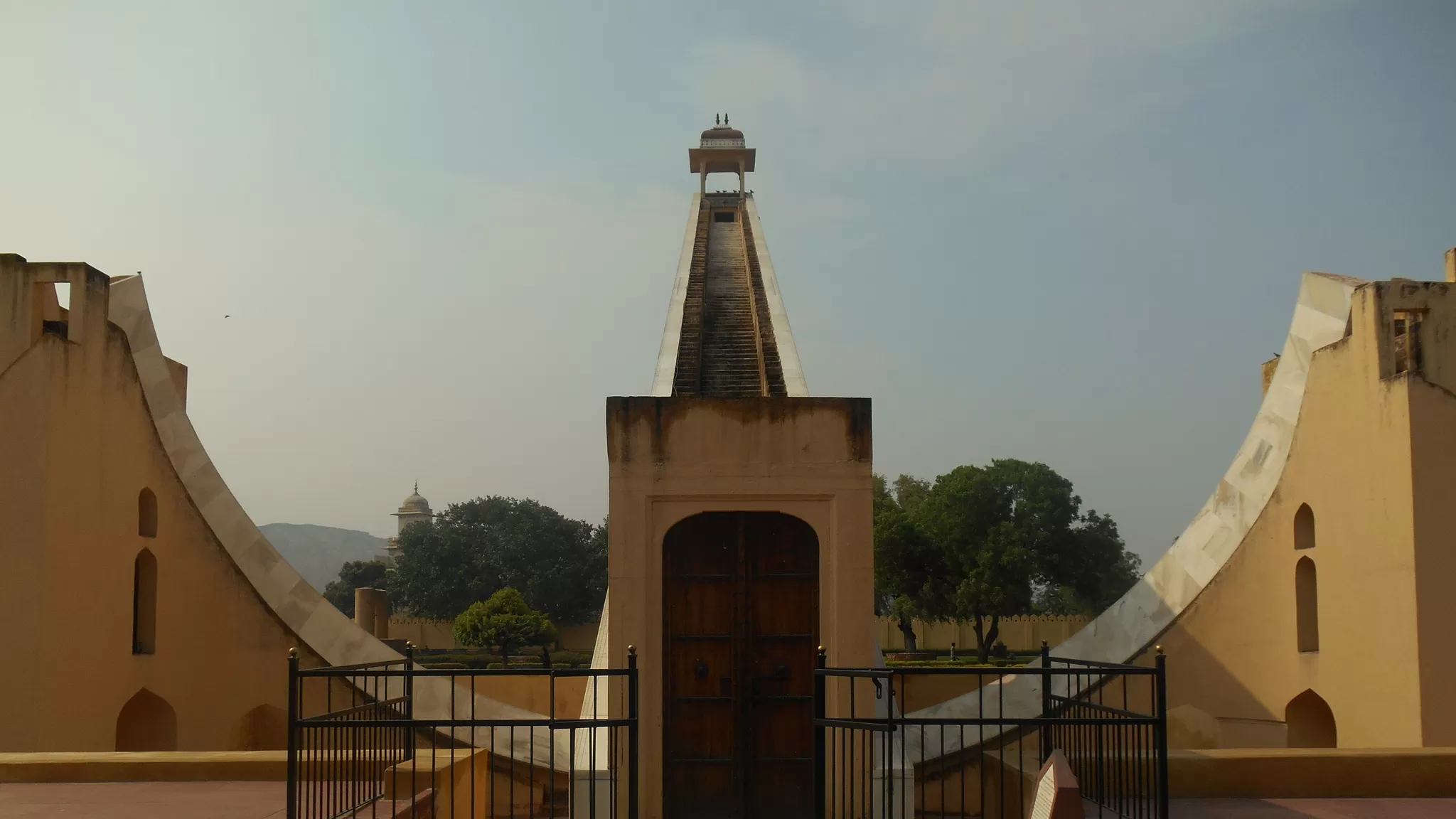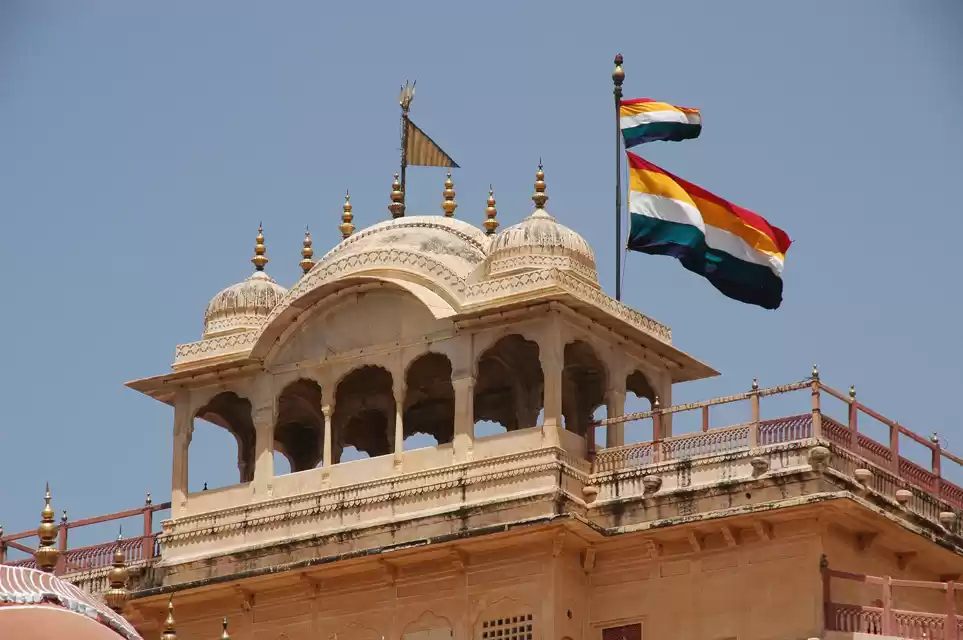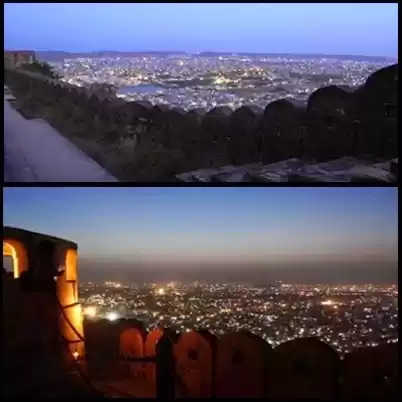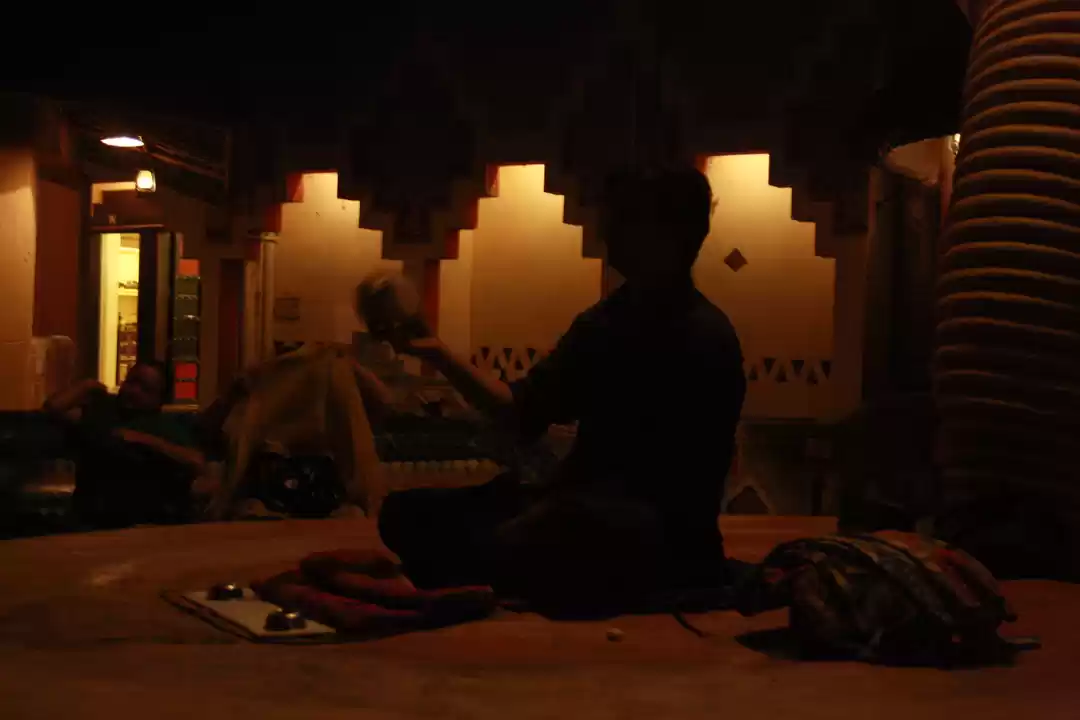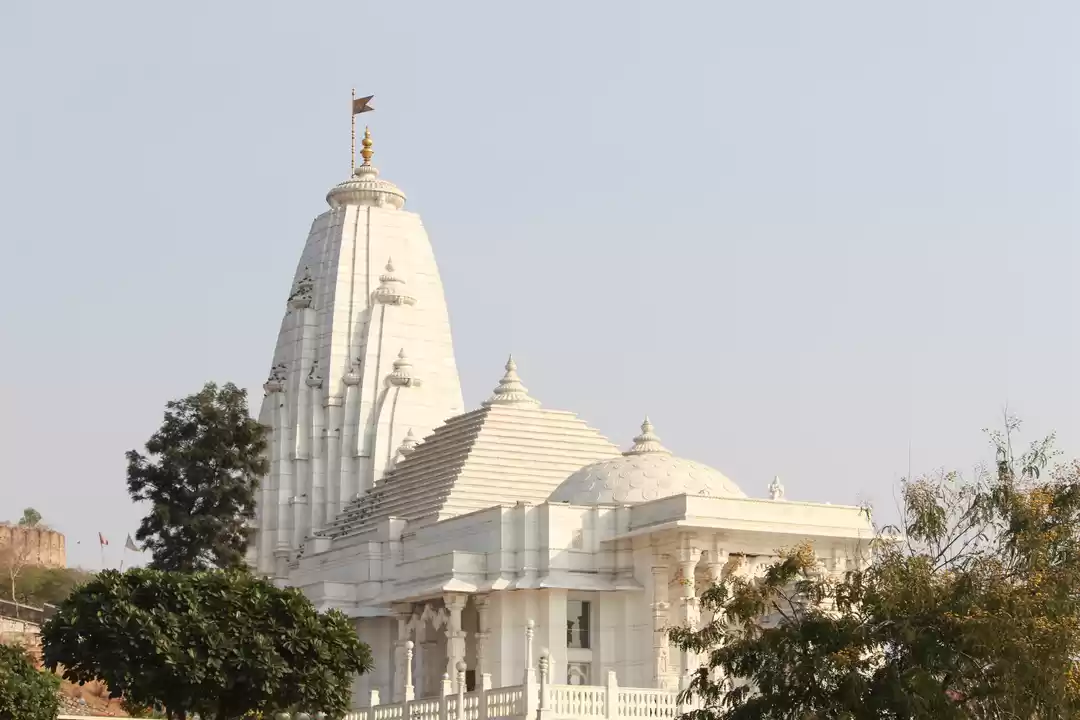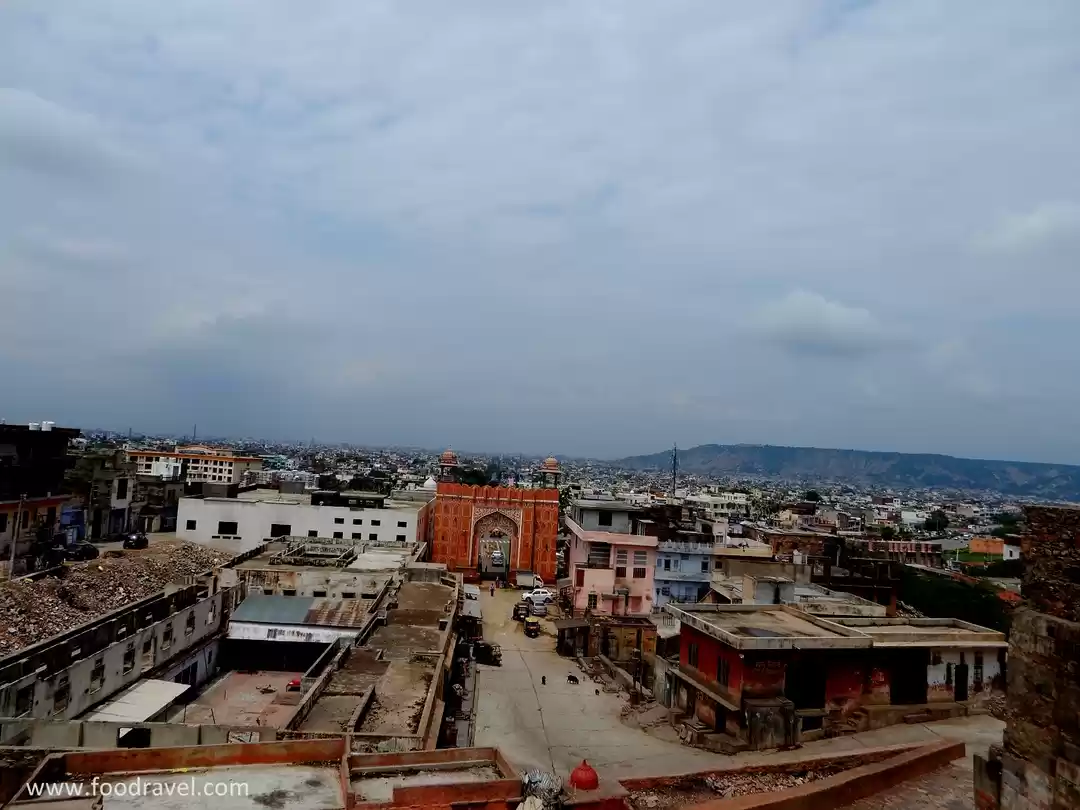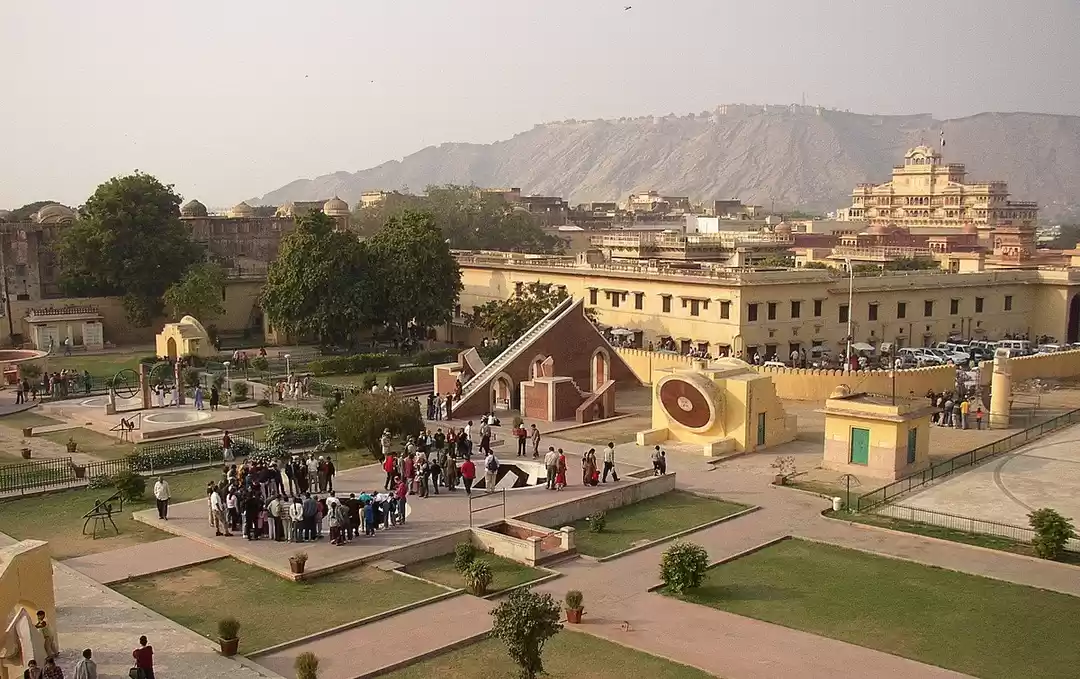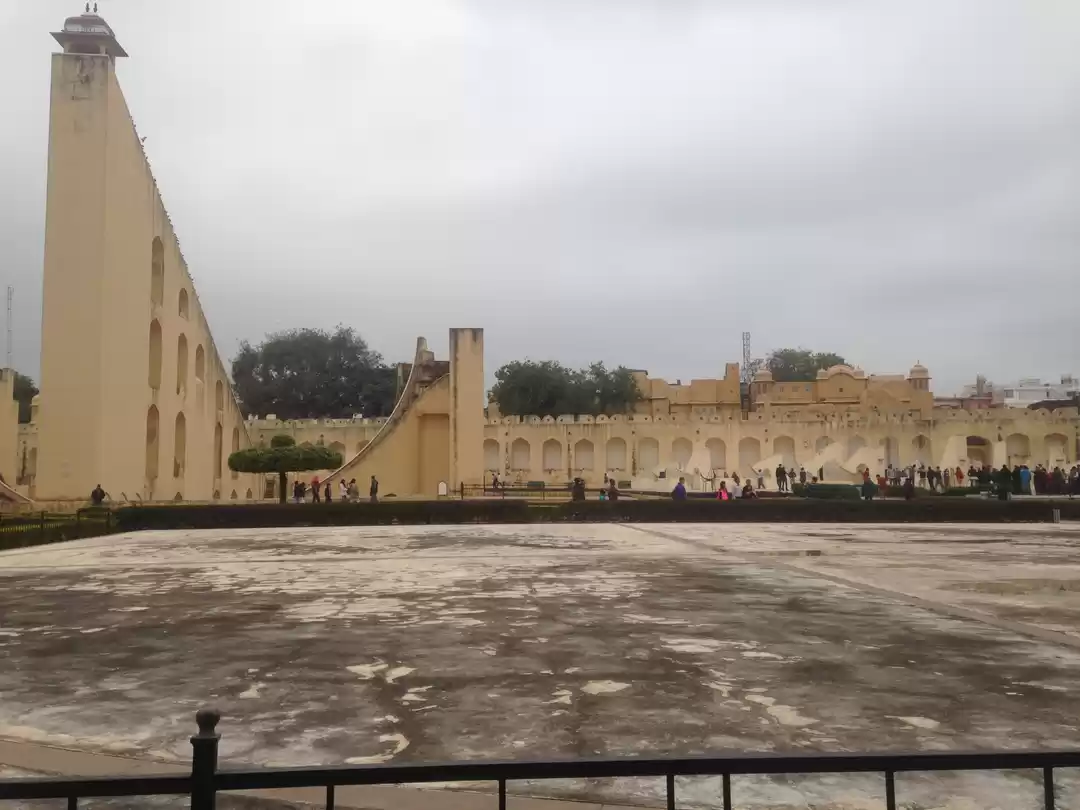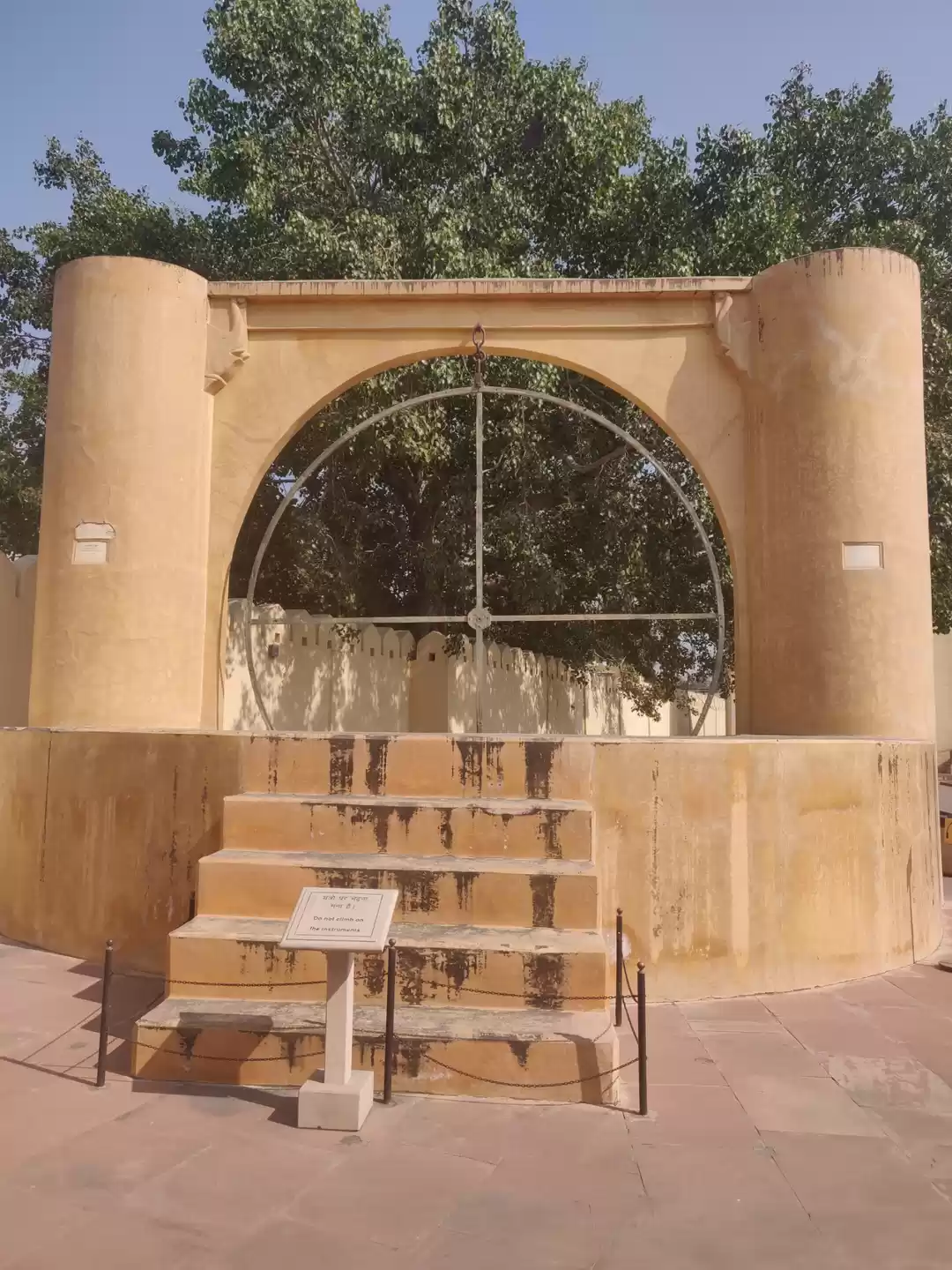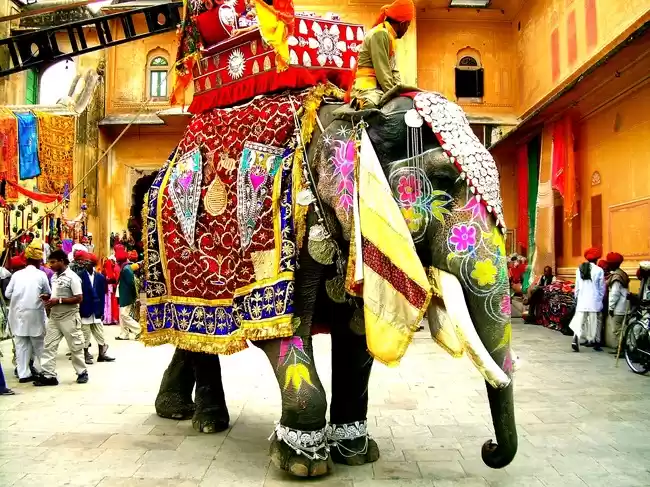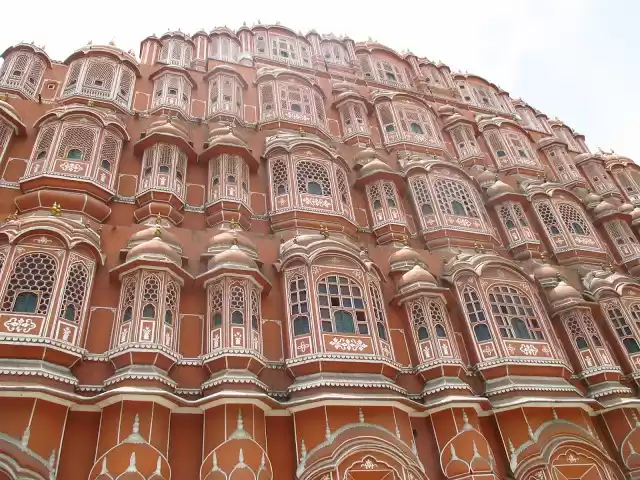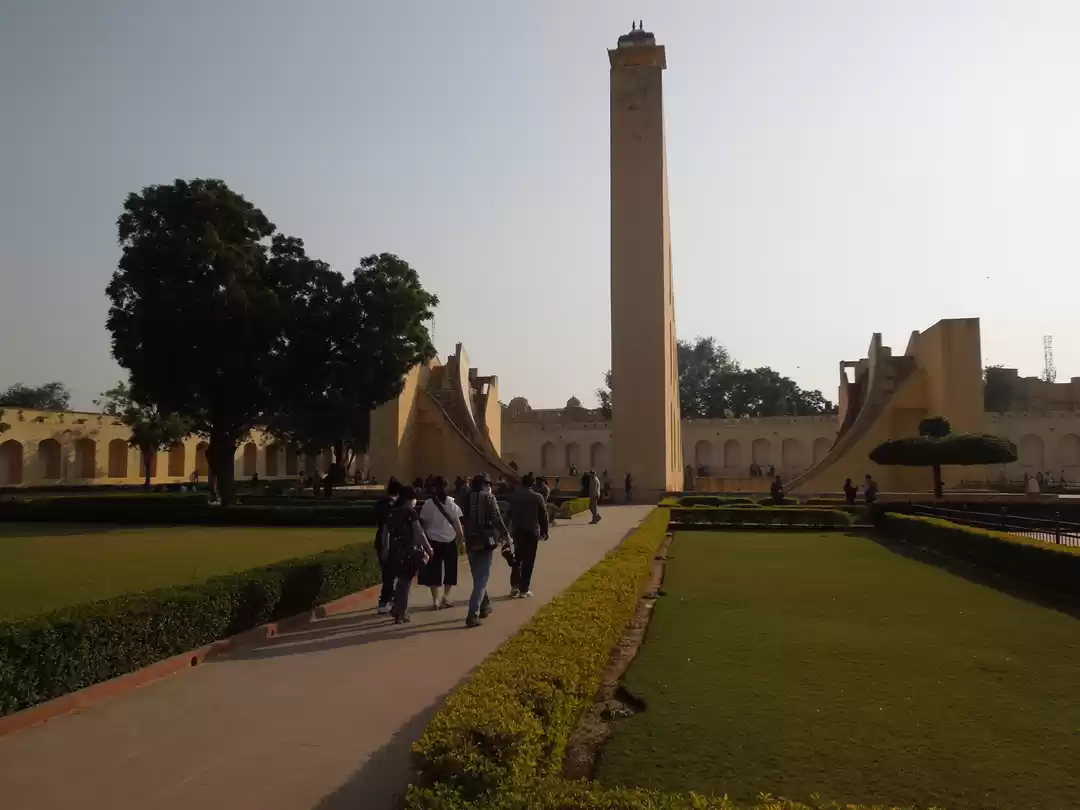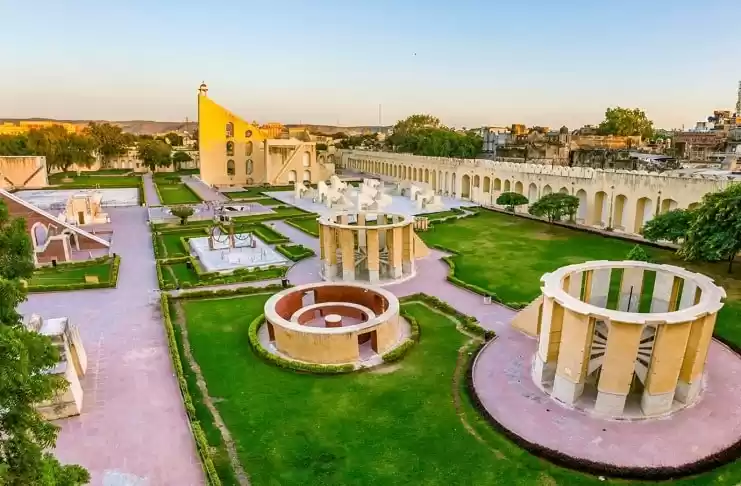Are you fascinated by the mysteries and wonders of the cosmos? Do you want to witness the marvels of ancient Indian astronomy and engineering? If yes, then you must visit Jantar Mantar Jaipur, the world’s largest sundial and a UNESCO World Heritage site. Jantar Mantar Jaipur is an astronomical observatory built by Maharaja Sawai Jai Singh II in the 18th century, and it houses 19 magnificent instruments that measure and predict various celestial phenomena with astonishing accuracy and precision.
In this article, we will take you on a journey through the history, architecture, and instruments of Jantar Mantar Jaipur, and provide you with all the information and tips you need to plan and enjoy your visit to this amazing place.
History of Jantar Mantar Jaipur
Jantar Mantar Jaipur is the largest and best preserved of the five Jantar Mantars built by Maharaja Sawai Jai Singh II, the founder of Jaipur and a great patron of science and culture. Maharaja Sawai Jai Singh II was a keen astronomer and astrologer, and he wanted to improve the existing astronomical tables and calendars based on the Islamic and Hindu systems. He also wanted to verify and refine the astronomical observations and theories of the ancient Indian, Persian, Arabic, and Greek scholars. To achieve these objectives, he commissioned the construction of Jantar Mantar Jaipur in 1728, along with four other Jantar Mantars in Delhi, Ujjain, Mathura, and Varanasi.

Jantar Mantar Jaipur is not only a testament to the scientific vision and ambition of Maharaja Sawai Jai Singh II, but also a reflection of his political and religious aspirations. He wanted to establish Jaipur as a new capital and a center of learning and culture, and he also wanted to harmonize the diverse religious and ethnic groups in his kingdom. He named his observatory Jantar Mantar, which means “instrument of calculation” in Sanskrit, and he designed it in accordance with the principles of Vastu Shastra, the ancient Indian science of architecture and harmony. He also incorporated elements of Islamic and Persian architecture and astronomy, and he invited scholars and experts from different regions and backgrounds to collaborate and exchange ideas at his observatory.
Jantar Mantar Jaipur is not only a historical and cultural monument, but also a living and functioning scientific instrument. It is still used by astronomers and astrologers to observe and study the celestial bodies and events, and it is also a popular tourist attraction and an educational site for visitors of all ages and interests. Jantar Mantar Jaipur is a UNESCO World Heritage site since 2010, and it is recognized as “an expression of the astronomical skills and cosmological concepts of the court of a scholarly prince at the end of the Mughal period”.
Architecture and Instruments of Jantar Mantar Jaipur
Jantar Mantar Jaipur is a stunning example of the fusion of art and science, and it showcases the architectural and engineering brilliance of Maharaja Sawai Jai Singh II and his team of experts. Jantar Mantar Jaipur covers an area of about 18,700 square meters, and it consists of 19 astronomical instruments made of stone, marble, and brass. The instruments are designed and calibrated to measure and predict various celestial phenomena, such as the position and movement of the sun, moon, planets, and stars, the time of the day and year, the seasons, the eclipses, the zodiac signs, and the latitude and longitude. The instruments are also adorned with intricate carvings and paintings, and they create a striking contrast with the blue sky and the pink city.

The instruments of Jantar Mantar Jaipur are not only impressive in their size and appearance, but also in their accuracy and precision. They can measure the time of the day with an error of only 2 seconds, the declination of the sun with an error of only 0.5 degrees, and the position of the stars with an error of only 6 minutes. They can also calculate the solar and lunar eclipses up to 19 years in advance, and the dates of the Hindu festivals and auspicious occasions. The instruments of Jantar Mantar Jaipur are also unique and innovative, and they incorporate the latest scientific knowledge and techniques of the time, such as the use of the decimal system, the correction of the refraction of light, and the adjustment of the latitude and longitude.
Some of the most popular and prominent instruments of Jantar Mantar Jaipur are:

Vrihat Samrat Yantra: The Vrihat Samrat Yantra, or the Great King of Instruments, is the world’s largest sundial, and the most iconic and impressive instrument of Jantar Mantar Jaipur. It is a giant equinoctial dial, which means that it measures the time of the day based on the position of the sun on the equinoxes, when the day and night are equal. It consists of a huge triangular gnomon, or a vertical pointer, that rises to a height of 27 meters, and two quadrants, or curved walls, that flank the gnomon on the east and west sides. The gnomon and the quadrants are aligned with the axis of the earth, and they are marked with scales and hour lines that indicate the time of the day in various units, such as hours, minutes, seconds, ghatis, palas, and vipalas. The Vrihat Samrat Yantra can measure the time of the day with an error of only 2 seconds, and it can also indicate the declination of the sun, the solstices, and the equinoxes.
Laghu Samrat Yantra: The Laghu Samrat Yantra, or the Small King of Instruments, is a smaller version of the Vrihat Samrat Yantra, and it is more accurate and precise. It is also an equinoctial dial, but it has only one quadrant, or a curved wall, that faces the south. The quadrant is 5.5 meters high, and it has a gnomon, or a vertical pointer, that is perpendicular to the quadrant. The quadrant and the gnomon are marked with scales and hour lines that indicate the time of the day in various units, such as hours, minutes, seconds, ghatis, palas, and vipalas. The Laghu Samrat Yantra can measure the time of the day with an error of only 1 second, and it can also indicate the declination of the sun, the solstices, and the equinoxes.

Jai Prakash Yantra: The Jai Prakash Yantra, or the Light of Jai Instrument, is a pair of hemispherical sundials, and it is the most versatile and complex instrument of Jantar Mantar Jaipur. It is named after Jai Singh II, the founder of Jantar Mantar Jaipur, and it is based on the design of the Greek astronomer Hipparchus. It consists of two concave hemispheres, or bowls, that are inverted and placed opposite to each other. The hemispheres are divided into six marble slabs, and each slab is marked with scales and hour lines that indicate the time of the day, the position of the sun, the zodiac signs, and the altitude and azimuth of the celestial bodies. The hemispheres also have a metal ring, or a wire, that is suspended from the center of the bowl, and it acts as a gnomon, or a pointer, that casts a shadow on the surface of the bowl. The Jai Prakash Yantra can measure the time of the day, the position of the sun, the zodiac signs, and the altitude and azimuth of the celestial bodies with great accuracy and precision, and it can also be used to verify and correct the readings of the other instruments of Jantar Mantar Jaipur.
Rashivalayas Yantra: The Rashivalayas Yantra, or the Zodiac Instrument, is a set of 12 sundials, and it is the most unique and innovative instrument of Jantar Mantar Jaipur. It is designed to measure the position and movement of the sun in the 12 zodiac signs, or the rashis, which are important for astrology and horoscope. It consists of 12 gnomons, or vertical pointers, that are placed on 12 inclined planes, or walls, that face different directions. The gnomons and the planes are aligned with the axis of the earth, and they are marked with scales and hour lines that indicate the time of the day and the position of the sun in the zodiac signs. The Rashivalayas Yantra can measure the position and movement of the sun in the zodiac signs with an error of only 6 minutes, and it can also indicate the dates of the Hindu festivals and auspicious occasions.
These are just some of the amazing instruments of Jantar Mantar Jaipur, and there are many more to explore and admire, such as the Ram Yantra, the Narivalaya Yantra, and more.
Ram Yantra:
The Ram Yantra, or the Ram Instrument, is a pair of cylindrical sundials, and it is one of the most accurate and precise instruments of Jantar Mantar Jaipur. It is designed to measure the altitude and azimuth of the sun and the moon, which are important for determining the direction and location of a place. It consists of two circular walls, or cylinders, that are open at the top and bottom, and that are perpendicular to each other. The walls are 5.5 meters high, and they are marked with scales and hour lines that indicate the altitude and azimuth of the sun and the moon. The walls also have a metal ring, or a wire, that is suspended from the center of the cylinder, and it acts as a gnomon, or a pointer, that casts a shadow on the surface of the wall. The Ram Yantra can measure the altitude and azimuth of the sun and the moon with an error of only 0.5 degrees, and it can also be used to verify and correct the readings of the other instruments of Jantar Mantar Jaipur.
Narivalaya Yantra:
The Narivalaya Yantra, or the Equatorial Instrument, is a pair of equatorial sundials, and it is one of the simplest and most elegant instruments of Jantar Mantar Jaipur. It is designed to measure the time of the day based on the position of the sun on the equator, which is the same throughout the year. It consists of two circular plates, or dials, that are parallel to the equator, and that face the north and south directions. The plates are 2.5 meters in diameter, and they have a gnomon, or a vertical pointer, that is perpendicular to the plate. The plates and the gnomons are marked with scales and hour lines that indicate the time of the day in various units, such as hours, minutes, seconds, ghatis, palas, and vipalas. The Narivalaya Yantra can measure the time of the day with an error of only 1 second, and it can also indicate the position of the sun on the equator.
These are just some of the amazing instruments of Jantar Mantar Jaipur, and there are many more to explore and admire, such as the Digamsa Yantra, the Chakra Yantra, the Kapali Yantra, the Disha Yantra, and the Dhruva Darshak Pattika. Each instrument has its own charm and significance, and you can learn more about them by visiting Jantar Mantar Jaipur or by reading the further reading section at the end of this article.
Visiting Jantar Mantar Jaipur
Jantar Mantar Jaipur is a must-visit destination for anyone who is interested in astronomy, astrology, history, culture, or architecture. It is a place where you can marvel at the ancient Indian wisdom and innovation, and where you can experience the beauty and harmony of the cosmos. Here are some tips and information to help you plan and enjoy your visit to Jantar Mantar Jaipur:

Best Time to Visit:
The best time to visit Jantar Mantar Jaipur is during the winter season, from October to March, when the weather is pleasant and the sky is clear. You can also visit Jantar Mantar Jaipur during the summer season, from April to June, when the sun is high and bright, and the instruments are more visible and accurate. However, you should avoid visiting Jantar Mantar Jaipur during the monsoon season, from July to September, when the weather is humid and rainy, and the instruments are less reliable and accessible.

Timings and Entry Fee:
Jantar Mantar Jaipur is open every day from 9:00 am to 4:30 pm, and it also hosts a light and sound show every evening from 6:30 pm to 7:30 pm in English, and from 7:30 pm to 8:30 pm in Hindi. The entry fee for Jantar Mantar Jaipur is Rs. 50 for Indians, Rs. 15 for Indian students, Rs. 200 for foreigners, and Rs. 100 for foreign students. The entry fee for the light and sound show is Rs. 100 for Indians and Rs. 200 for foreigners. You can also buy a composite ticket for Rs. 300 for Indians and Rs. 1000 for foreigners, which allows you to visit Jantar Mantar Jaipur and four other attractions in Jaipur, such as City Palace, Hawa Mahal, Amber Fort, and Albert Hall Museum, within two days.
Location and Distance:
Jantar Mantar Jaipur is located in the heart of the city, near the City Palace and the Hawa Mahal, and it is easily accessible from various points of the city. The distance of Jantar Mantar Jaipur from some of the major landmarks and transport hubs of the city are:
Jaipur Airport: 13 km
Jaipur Railway Station: 6 km
Jaipur Bus Stand: 6 km
City Palace: 0.5 km
Hawa Mahal: 0.7 km
Amber Fort: 11 km
Modes of Transport:
You can reach Jantar Mantar Jaipur by various modes of transport, such as bus, taxi, auto-rickshaw, and metro. The nearest bus stop to Jantar Mantar Jaipur is Badi Chaupar, which is 0.5 km away, and the nearest metro station to Jantar Mantar Jaipur is Chandpole, which is 1.5 km away. You can also hire a taxi or an auto-rickshaw from any part of the city, or you can book a cab or a bike from online platforms, such as Ola, Uber, or Rapido.
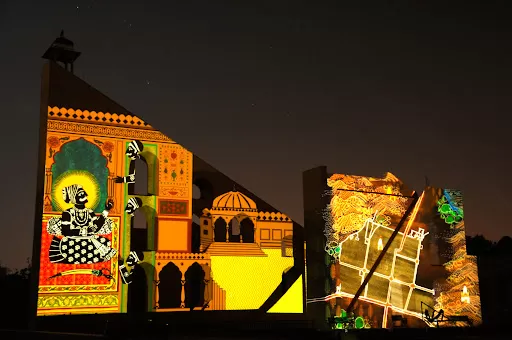
Light and Sound Show:
The light and sound show at Jantar Mantar Jaipur is a spectacular and informative show that narrates the history, architecture, and instruments of Jantar Mantar Jaipur, and their connection with the cosmos and the culture. The show uses colorful lights, music, and narration to create a mesmerizing and immersive experience for the visitors. The show lasts for an hour, and it is available in English and Hindi languages. The show is a great way to learn more about Jantar Mantar Jaipur and to enjoy its beauty and charm in the evening.
Nearby Attractions and Activities
Jantar Mantar Jaipur is not only a standalone attraction, but also a part of a larger and richer cultural and historical landscape of Jaipur. Jaipur, also known as the Pink City, is the capital and the largest city of Rajasthan, and it is one of the most popular and vibrant tourist destinations in India. Jaipur is famous for its majestic forts, palaces, temples, gardens, museums, markets, and festivals, and it offers a plethora of attractions and activities for visitors of all ages and interests. Here are some of the nearby attractions and activities that you can enjoy along with Jantar Mantar Jaipur:

City Palace:
City Palace is the royal residence and the administrative center of the erstwhile rulers of Jaipur, and it is one of the most splendid and magnificent palaces in India. City Palace is a complex of courtyards, gardens, buildings, and museums, that showcase the rich and diverse history, culture, and art of Jaipur and Rajasthan.
City Palace is located next to Jantar Mantar Jaipur, and it is open every day from 9:30 am to 5:00 pm. The entry fee for City Palace is Rs. 200 for Indians, Rs. 100 for Indian students, Rs. 500 for foreigners, and Rs. 300 for foreign students. You can also buy a composite ticket for Rs. 300 for Indians and Rs. 1000 for foreigners, which allows you to visit City Palace and four other attractions in Jaipur, such as Jantar Mantar Jaipur, Hawa Mahal, Amber Fort, and Albert Hall Museum, within two days.

Hawa Mahal:
Hawa Mahal, or the Palace of Winds, is one of the most iconic and distinctive landmarks of Jaipur, and it is a masterpiece of architecture and engineering. Hawa Mahal is a five-story building that resembles a honeycomb, and it has 953 windows, or jharokhas, that are decorated with intricate lattice work and pink sandstone. Hawa Mahal was built in 1799 by Maharaja Sawai Pratap Singh, and it was designed to allow the royal ladies to observe the street life and the festivals of the city without being seen by the public.
Hawa Mahal is located near Jantar Mantar Jaipur, and it is open every day from 9:00 am to 4:30 pm. The entry fee for Hawa Mahal is Rs. 50 for Indians, Rs. 10 for Indian students, Rs. 200 for foreigners, and Rs. 25 for foreign students. You can also buy a composite ticket for Rs. 300 for Indians and Rs. 1000 for foreigners, which allows you to visit Hawa Mahal and four other attractions in Jaipur, such as Jantar Mantar Jaipur, City Palace, Amber Fort, and Albert Hall Museum, within two days.

Albert Hall Museum:
Albert Hall Museum, or the Central Museum, is the oldest and the largest museum in Rajasthan, and it is a treasure trove of art, culture, and history. Albert Hall Museum is housed in a stunning building that is inspired by the Indo-Saracenic style of architecture, and it has a collection of over 20,000 objects, such as paintings, sculptures, textiles, pottery, jewelry, weapons, musical instruments, and fossils, that showcase the rich and diverse heritage of Jaipur and Rajasthan. Albert Hall Museum is located near Jantar Mantar Jaipur, and it is open every day from 9:00 am to 5:00 pm, and from 7:00 pm to 10:00 pm. The entry fee for Albert Hall Museum is Rs. 40 for Indians, Rs. 20 for Indian students, Rs. 300 for foreigners, and Rs. 150 for foreign students.

Amber Fort:
Amber Fort, or Amer Fort, is one of the most majestic and magnificent forts in India, and it is a symbol of the glory and power of the Rajput rulers of Jaipur. Amber Fort is built on a hilltop, overlooking the Maota Lake, and it is a complex of palaces, courtyards, gardens, temples, and halls, that display the finest examples of Rajput and Mughal architecture and art. Amber Fort is famous for its Sheesh Mahal, or the Mirror Palace, which is a hall of mirrors that reflects the light and creates a dazzling effect. Amber Fort is also famous for its elephant ride, which is a thrilling and royal way to enter the fort.
Amber Fort is located 11 km away from Jantar Mantar Jaipur, and it is open every day from 8:00 am to 5:30 pm, and from 6:30 pm to 9:15 pm. The entry fee for Amber Fort is Rs. 100 for Indians, Rs. 10 for Indian students, Rs. 500 for foreigners, and Rs. 100 for foreign students. The entry fee for the elephant ride is Rs. 1100 for Indians and Rs. 1200 for foreigners.

Nahargarh Fort:
Nahargarh Fort, or the Abode of Tigers, is another splendid and spectacular fort in Jaipur, and it is a great place to enjoy the panoramic views of the city and the surrounding hills. Nahargarh Fort was built in 1734 by Maharaja Sawai Jai Singh II, the founder of Jantar Mantar Jaipur, and it was used as a summer retreat and a defense fort by the royal family. Nahargarh Fort is famous for its Madhavendra Bhawan, or the Palace of Madho Singh, which is a two-story building that has 12 identical suites for the king and his queens, and that is decorated with paintings, sculptures, and frescoes.
Nahargarh Fort is also famous for its sunset point, which is a popular spot to watch the sun set over the city and the lake. Nahargarh Fort is located 16 km away from Jantar Mantar Jaipur, and it is open every day from 10:00 am to 5:30 pm. The entry fee for Nahargarh Fort is Rs. 50 for Indians, Rs. 5 for Indian students, Rs. 200 for foreigners, and Rs. 25 for foreign students.
These are just some of the nearby attractions and activities that you can enjoy along with Jantar Mantar Jaipur, and there are many more to explore and experience, such as Jaigarh Fort, Jal Mahal, Birla Mandir, Chokhi Dhani, and Jaipur Literature Festival. You can also indulge in the local cuisine, shopping, and nightlife of Jaipur, and discover the charm and vibrancy of the Pink City.
Jantar Mantar Jaipur is a unique and fascinating destination that offers a blend of science, art, history, and culture. It is a place where you can admire the ancient Indian astronomy and engineering, and where you can learn more about the cosmos and the culture. Jantar Mantar Jaipur is also a part of a larger and richer cultural and historical landscape of Jaipur, and it is surrounded by many other attractions and activities that you can enjoy and explore. Jantar Mantar Jaipur is a must-visit destination for anyone who is interested in astronomy, astrology, history, culture, or architecture, and it is a place that will leave you awestruck and inspired.
So, what are you waiting for? Plan and book your trip to Jantar Mantar Jaipur today, and share your feedback and experience with us and other readers. We hope you have a wonderful and memorable time at Jantar Mantar Jaipur and Jaipur.






